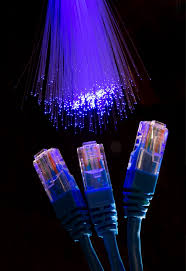Have you ever wondered about the history of your internet service provider? If you’re an Argentinian who has used Fibertel, you might have asked yourself, “What exactly happened on this very spot where Fibertel began its journey?”
Fibertel, now part of the telecommunications giant Telecom Argentina (branded as Personal), was once a pioneering force in broadband internet in Argentina. From its early days as a cable internet provider to its integration into a larger telecom ecosystem, Fibertel’s story is intertwined with Argentina’s digital transformation.
In this blog post, we’ll explore:
- The origins of Fibertel and how it revolutionized internet access in Argentina.
- Key milestones in its growth and eventual rebranding.
- The technological advancements Fibertel introduced.
- How its legacy lives on under the Personal brand.
- What the future holds for internet connectivity in Argentina.
Let’s dive in!
Chapter 1: The Birth of Fibertel – A Pioneer in Argentine Broadband
The Early Days of Internet in Argentina
In the late 1990s and early 2000s, internet access in Argentina was dominated by dial-up connections. Speeds were slow, and users had to endure the infamous “dial-up tone” while waiting to connect. But a shift was coming—broadband was on the horizon.
Fibertel’s Founding and Cable Modem Revolution
Fibertel emerged in the early 2000s as one of the first companies to offer cable modem internet in Argentina. Unlike traditional telephone-based connections, Fibertel used existing cable TV infrastructure to deliver faster and more reliable internet.
- Competition with Speedy (Telefónica): While Speedy (ADSL) was the dominant player, Fibertel’s cable internet provided a competitive alternative with better speeds.
- Early Expansion: Initially available in Buenos Aires, Fibertel quickly expanded to other major cities, becoming a household name.
Why Fibertel Stood Out
- Always-On Connection: No more dial-up disruptions.
- Higher Speeds: Early plans offered up to 1 Mbps, which was revolutionary at the time.
- Bundled Services: Many users got internet + cable TV packages, making it a cost-effective choice.
Chapter 2: Growth, Challenges, and the Shift to Personal
The Rise of Fibertel as a Market Leader
By the mid-2000s, Fibertel had cemented itself as a key player in Argentina’s internet market. It continued to innovate by:
- Introducing higher-speed plans (10 Mbps, 20 Mbps, and beyond).
- Expanding coverage to more regions.
- Improving customer service and reliability.
The Merger with Cablevisión and Telecom Argentina
In 2007, Grupo Clarín (which owned Cablevisión) acquired Fibertel, merging it into their telecom portfolio. This was a turning point, as it set the stage for further consolidation.
- 2013: The Argentine government approved the merger of Cablevisión and Telecom Argentina, creating a unified telecom giant.
- Rebranding to Personal: In 2016, Fibertel’s services were gradually rebranded under Personal, Telecom Argentina’s flagship brand.
Why the Rebranding?
The shift from Fibertel to Personal was part of a larger strategy to offer convergent services (internet, mobile, TV, and landline under one brand). Customers now had access to:
- Fiber-optic internet (FiberCorp).
- Mobile plans with data bundles.
- Streaming and on-demand TV.
Chapter 3: Technological Advancements – From Cable to Fiber Optics
The Transition to Fiber Optic Networks
While Fibertel started with coaxial cable internet, the future was in fiber optics. Telecom Argentina invested heavily in FiberCorp, its fiber-to-the-home (FTTH) service, offering:
- Symmetrical speeds (same upload and download).
- Lower latency, better for gaming and streaming.
- Future-proof infrastructure capable of 1 Gbps and beyond.
How Fibertel’s Legacy Lives On
Even though the Fibertel brand faded, its infrastructure and customer base became the backbone of Personal’s internet services. Many former Fibertel users were seamlessly migrated to fiber-optic connections.
Chapter 4: The Future of Internet in Argentina – What’s Next?
5G and Beyond
With the rollout of 5G networks, Telecom Argentina (Personal) is positioning itself as a leader in next-gen connectivity. Expect:
- Faster mobile internet.
- Smart home integrations.
- Enhanced cloud services.
Competition and Consumer Benefits
The Argentine internet market is more competitive than ever, with players like:
- Movistar (Telefónica)
- Claro (América Móvil)
- Smaller regional ISPs
This competition drives better prices, faster speeds, and improved customer service.
Conclusion: From Fibertel to Personal – A Digital Evolution
The phrase “on this very spot” takes us back to where Fibertel began—a company that reshaped how Argentinians accessed the internet. Though the brand no longer exists, its impact is undeniable. Today, under Personal, the legacy continues with cutting-edge fiber-optic networks and 5G advancements.
Final Thoughts
- Did you use Fibertel back in the day? What was your experience?
- Are you now on Personal Fiber? How does it compare?
- What do you expect from Argentina’s internet future?
Let us know in the comments! And if you found this post insightful, share it with others who remember the Fibertel days.

